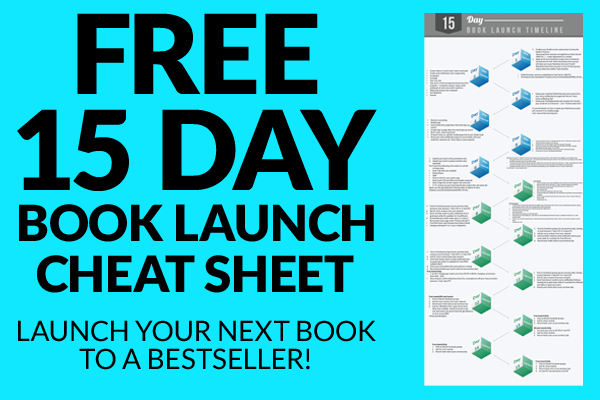Modern-day technological society has become so increasingly demanding and difficult, that “easy” has become one of our favorite words. So why wouldn’t your readers want their books to be easier to read? As it turns out, they do.
Here are 9 warning signs that your books aren’t delivering the “easy” your readers crave.
#1 – You Have 1 and 2-Star Reviewers
There’s nothing readers hate more than a difficult to follow book they just spent $3.99 to purchase and 3 hours, trying to comprehend. The only reviewers more annoyed are the grammar and punctuation “police.”
Not exactly good for your ego, nor are they good for your long-term profitability as an author. And 1-2 star reviews tend to attract the “me-too” reviewers that were only lurking on your book page, but now feel empowered to write down their own opinion. It can become a “snowball” effect.
#2 – You’re Feeling Like A.B. Kess
Enter A.B. Kess (Note: Not a real author or book, for illustration purposes only!), an indie author whose just finished his first non-fiction book, “12 Steps to a Better Life: How to Kick Bad Habits With These 12 Proven Steps”.
A.B. is not a qualified counsellor or psychiatrist, but he does have plenty of experience in kicking bad habits and leading a better life, so he has incorporated a lot of his own personal story throughout the book, backed up by statistics and a ton of clinical case studies. He’s feeling pretty happy with himself following the final edit.
7 days later, A.B. has published his book and launched it out into the world. His hope is to land some speaking gigs from the book and start a coaching business too.
But, a few days following his launch, he’s started to get some negative reviews, 2 or 3 are 1-star’s and it’s hurting his author ranking on Amazon.
He doesn’t understand what the reviewers are talking about…
“I was really excited to read this book, having a hard time kicking my smoking habit, but after the first two chapters, I couldn’t go on… there was so much information that I was overwhelmed…”
“This book reads like a clinical trial, no personality, great for putting you to sleep though!”
…A.B. felt that these reviewers were just trying to undermine his credibility, so decided to ignore them.
Fast forward 6 months and the book is a complete bomb. No speaking gigs came from it and certainly no 1-on-1 coaching. A.B. Kess is devastated and heart-broken.
Where did he go wrong?
#3 – You Think Your Readers are as Knowledgeable as You Are
If you don’t want to end up like our friend, A.B. Kess, then you need to make sure your books are easy to read from your target audience’s point of view.
As the author, you might think that your book is easy to read, but you’re far too close to the subject matter to be objective. You need to take a step back and really look at your content and ask the question “Is this really going to resonate with my readers? Will they understand it?”
Using A.B. Kess as our example, let’s break down a few areas of where he probably went wrong:
- Not understanding his target audience
- Providing too much (unnecessary) information
- Providing too many statistics = boring
So, how do you make your book appealing and easy to read? We’re glad you asked.
Your book needs to have some of the following elements, if it doesn’t, then you could find yourself getting 1-2 star reviews that could have been avoided. And don’t worry, if you do have reviews that sound similar to Kess’, you can update your books interior file once you’ve finished reading this post!
Some of these are going to seem obvious, but just because something’s obvious doesn’t mean we’ll recognize that fact, and then take the time to fix it. Sometimes it takes being hit over the head a few times with the same message, before it takes hold and you take action.
#4 – Your Book Doesn’t Have a Table of Contents
This might seem obvious (duh) but there are a number of non-fiction books that we’ve purchased where a ToC has been non-existent. Without a ToC, your reader can’t jump around quickly to the content they want to read, which is the whole point of a ToC.
If you’re publishing ebooks, you need to have two ToCs, one that’s ‘inside’ your book and one that works with the device the reader is accessing your book on.
For example, on a Kindle (device or app), you can have what is called a NCX, which is a flat list of your ToC, accessible when a reader clicks on the three lines at the top left-hand corner from within the Kindle app… if you don’t have the NCX, it will just show up with options like “Cover”, “Beginning” and “Location” — strike one against you as an author if that’s all your reader sees.
#5 – Your Reader Doesn’t Know “How This Book Works”
Aside from your introduction, you should include a page or two on how your book is laid out and presents information. This lets readers know exactly how to read the content.
Not all non-fiction books are designed to be read from cover to cover. Letting your readers know up front that they can and should jump around as needed, or must read one section before understanding another, will ensure that your reader’s experience is smooth.
Do yourself and your readers a favor, include a “How This Book Works” page or section early on in your book.
#6 – Your Book Doesn’t Have Chapter Introductions
Similar to the how this book works section, chapter introductions may seem pointless, but they orient your reader and let them know what to expect by reading the current chapter. It’s important information for them to have, and can let them know whether or not they want to read the chapter or skip it. Many readers are skimmers and this helps them immensely.
Chapter intros might seem obvious, but we’ve both seen a number of non-fiction books start off great and by chapter 3, the author’s gotten lazy and there are no more introductions.
Think about how you read a non-fiction book. Do you read it from cover to cover? No? Neither do we. So as a reader, when I come back to a book, it might be 2-3 days later, or it could be a month later. And I may want to get back into it in a completely different section.
How nice is it when an author has taken the trouble to provide a quick intro at the beginning of the chapter that not only covers what you’ve just learned in the last chapter, but also tells you what you’re going to learn in the current one?
Those are the books and authors I love and continue to buy from.
#7 – You Forgot to Include Chapter Summaries
Similar to above, at the end of the chapter, you should provide a brief 1-2 sentence summary of what you’ve just covered. For those readers who are jumping around from chapter to chapter, they can quickly get the gist of what a chapter covers by reading this summary.
From there, they can decide if they need to read the chapter in full, or whether they know enough to skip it.
Remember, we’re trying to make it as easy as possible for a reader to read your book!
#8 – And no “Tools & Resources” Page
If you want to add value to your reader, and also make it easy for them to find links and resources you’ve mentioned throughout the book, create a tools & resources page at the end of the book.
Not only will your readers appreciate it, it’s an opportunity to include some affiliate links, links to your own work (for further reference) plus other tools and resources you couldn’t include in the main content of your book.
You could take it one step further and make this a downloadable PDF, particularly if you’ve got 2-3 pages of resources.
And last, but by no means least, the kiss of death…
#9 – You Don’t Have Awesome Content
Steve and I are authors, too, and we get it—we believe all of our content is awesome, right? Uh, not always.
If you’re just getting started or you haven’t found your “groove” yet, some of your early stuff may actually … well, there’s no kind way to put it… It may suck.
Don’t worry, that’s part of the process of becoming an author—write and improve. Even your haters will help you do that.
That’s okay, because all of us have been there, but you need to take some time to review the feedback from readers in your target audience. Sift out the haters, but listen to the people who genuinely give constructive feedback.
If a review starts out with “I wanted to like this book, but…” that’s a review worth listening to because they’re interested in your subject matter.
Then all you’ll need to do is adjust and improve your content in order to win with an audience that wants to read about the subject.
There you have it. 9 seemingly obvious, but often overlooked things you can do right now to make your books easier to read and thus more popular with your target audience.
Add them to your pre-launch checklist and then to your books. You’ll see an improvement in those reviews right away.


